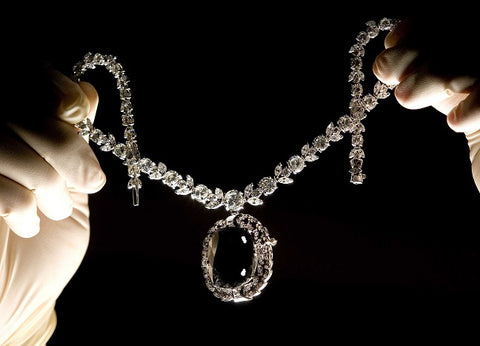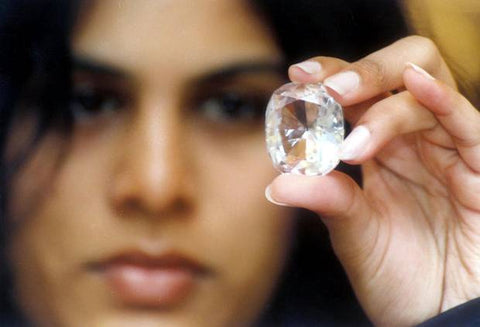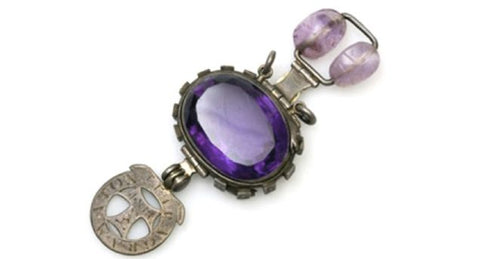
Over the years, gemstones have been celebrated for providing spirituality and strength – even providing protection from the perils of war. But like anything else under this sun, even gemstones have a side that’s been feared by some. These gemstones are the more sinister ones that are capable of bringing down even the strongest of men. Did we take you unawares?
From the Hope Diamond to the Delhi Sapphire, we are bringing you stories behind four of the most famous cursed gemstones on earth.

The Hope Diamond is arguably the most popular gemstone that has a storied past of bad luck and misfortune. Discovered in the mines of Golconda, the 45.52 carat blue diamond has been blamed for a long list of tragedies that include suicide, insanity and everything in between.
Well, history holds that King Louis XVI and Marie Antoinette owned the diamond during their beheadings. Even the jewellers who may have handled the diamond are said to have not been spared from its rumoured malice.
From the insanity and suicide of Jacques Colot, to the ruin of jeweller Simon Frankle, who bought the diamond from the Hope family, these incidents are all linked to the Hope Diamond. Even the last person to own the diamond, an American coal heiress and socialite, had her daughter die of an overdose, lost her son in a car crash, and had her husband leave her for another woman.
This diamond was later auctioned by Harry Winston, who in time donated the Hope Diamond to the Smithsonian, the world’s largest museum and research complex.

2. The Black Orlov
The Black Orlov is a 67.50 carat black diamond, also known as the Eye of Brahma Diamond. Legend holds that the diamond’s curse began after it was stolen off an ancient statue of the Hindu God Brahma in Pondicherry.
In 1932, in search of prospective buyers, a diamond dealer brought the Black Orlov into the United States. A few months later he committed suicide by jumping from a skyscraper in New York City.
Similarly, Russian princesses Leonila and Nadia Orlov- one of the diamond’s namesake- allegedly ended their lives by jumping to their deaths, while the diamond was in their possession.
In an attempt to break the curse, the diamond was later cut into three pieces. The Black Orlov, now set into a necklace of 124 diamonds has become a part of the display at the American Museum of Natural History in New York City.

3. Koh-I-Noor Diamond
The diamond, once known as the largest, is said to be 105.6 carats, allegedly discovered in the mines of Golconda. Throughout the history of the Koh-I-Noor, the diamond passed through many hands. Among them were the Indians, Persians, Afghans and Sikhs, who fought battles to claim ownership.
According to lore, the curse of the diamond was found in ancient Hindu text that read “he who owns this diamond will own the world, but will also know all its misfortunes. Only God or woman can wear it with impunity.”
Eventually the diamond was seized from the Sikhs by the East India Company, and became a part of the British crown jewels.
Today, the diamond rests in the Queen’s coronation crown.

4. The Delhi Purple Sapphire
Actually an amethyst, the fabled sapphire was said to have been stolen by a British soldier from the Temple of Indra, the Hindu God of war and weather. After experiencing streaks of bad luck, the stone eventually landed in the hands of a scientist, John Heron-Allen.
After dealing with a stretch of misfortunes, Heron-Allen tried to get rid of it twice by gifting it away, only to have it returned to him. In a last-ditch effort to rid himself of bad luck, Heron-Allen even claimed to have thrown the stone into the murky Regent’s Canal, but it was again returned to him after it was found by a dredger.
Wary of its powerful curse, the Delhi Sapphire was later locked away in seven boxes and surrounded by good luck charms. Today, the Delhi Sapphire is on display at the London Natural History Museum, with strict instructions that caution against touching the stone with bare hands.
From the jewellery that's making history to those lost in time, check out 10 of the most expensive jewellery on earth.
The Orna-mentals is a blog by Radiant Bay with a mission to bring you expert opinions, news, ideas and inspirations about fashion, jewellery and all its nuances. Register with us for all the BEST deals & NEW arrivals at Radiant Bay.

